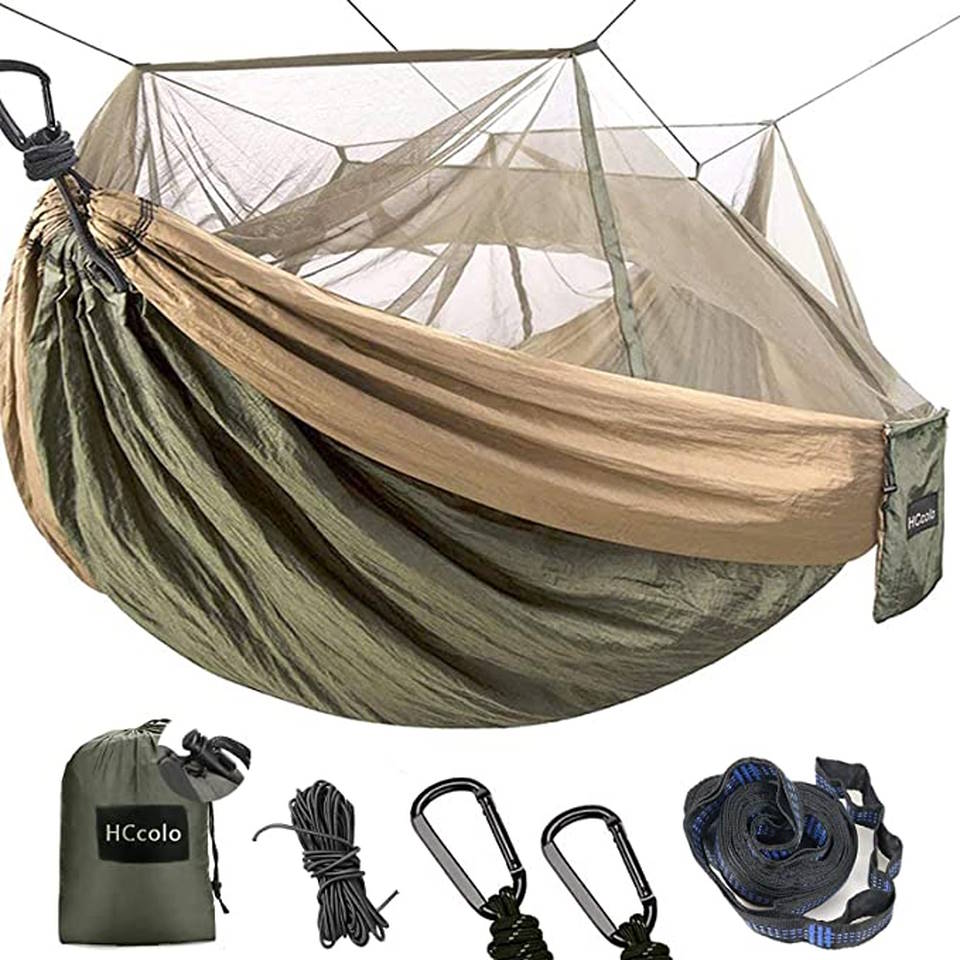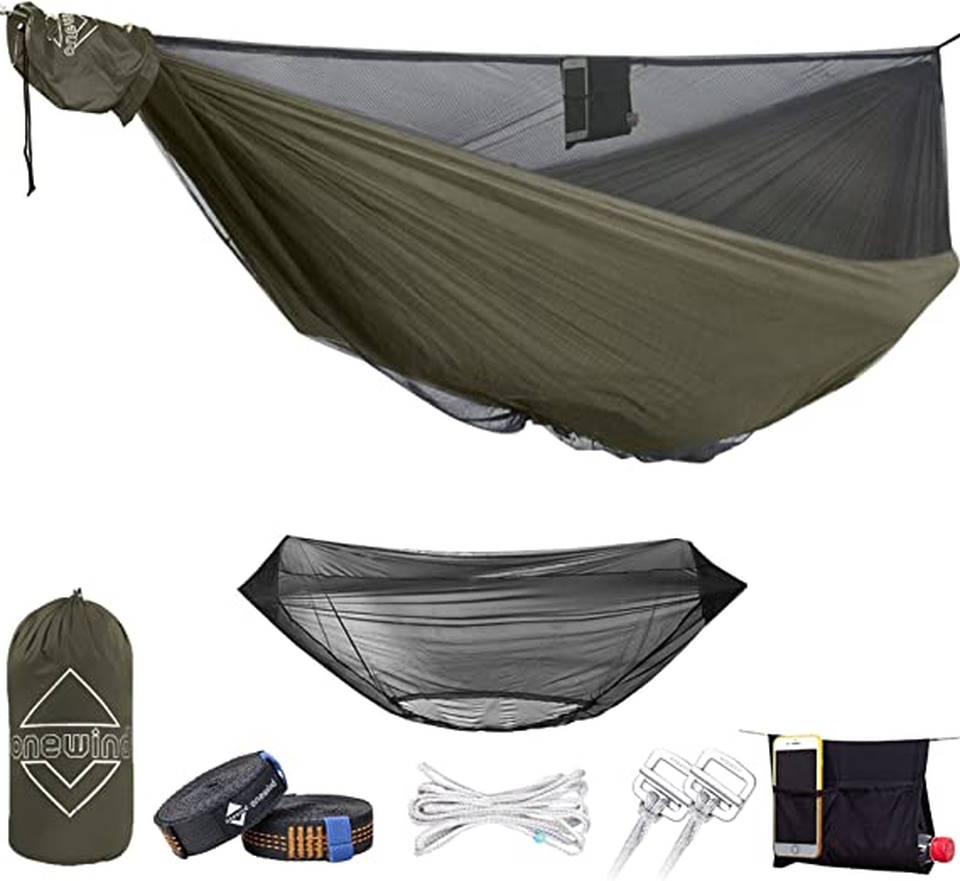Welcome, hammock enthusiasts! Are you ready to elevate your relaxation game and experience the ultimate tranquility in your own backyard? Well, one essential skill you’ll need is knowing how to tie a hammock securely and with ease. Whether you’re a veteran hammocker wanting to try out different knot techniques or a beginner looking for the best way to tie up your hammock, you’ve come to the right place. We’ll explore the art of tying knots for hammocks, specifically focusing on the best knot to use and how to tie a hammock using just a rope. Additionally, we’ll delve into the ideal knot to hold heavy weight, ensuring your hammocking experience remains safe and secure. So, let’s dive into the world of knots and learn how to hang your hammock like a pro!
Introduction

When it comes to enjoying the great outdoors, a hammock is a must-have item. Whether you’re camping, hiking, or just relaxing in your backyard, a hammock provides the perfect spot to unwind and take in the surroundings. But in order to ensure a safe and secure hammock experience, it’s important to know how to tie the right knots to properly set up your hammock. We will explore the different types of knots that are best suited for tying up a hammock and provide step-by-step instructions on how to tie them.
1. The Bowline Knot: The bowline knot is considered one of the most reliable knots for tying up a hammock. It creates a secure loop that won’t slip under tension, making it an ideal choice for hammock suspension. To tie a bowline knot, follow these steps:
- Make a small loop in the rope, leaving a long tail.
- Pass the tail of the rope through the loop, going behind the standing end.
- Bring the tail of the rope back over the loop and thread it through the opening created by the loop.
- Tighten the knot by pulling on the standing end and the tail simultaneously.
2. The Clove Hitch Knot: The clove hitch knot is another reliable choice for tying a hammock. This knot is quick and easy to tie, making it a popular option for hammock enthusiasts. Here’s how to tie a clove hitch knot:
- Wrap the rope around the anchor point, such as a tree or a hammock stand.
- Cross the rope over itself to create a loop.
- Bring the end of the rope over the loop and tuck it under the rope.
- Pull the working end of the rope to tighten the knot.
3. The Taut-Line Hitch Knot: The taut-line hitch knot is perfect for adjusting the tension of your hammock. It allows you to easily tighten or loosen the suspension system to achieve the desired level of comfort. Follow these steps to tie a taut-line hitch knot:
- Create a loop in the rope and wrap the working end around the standing part of the rope.
- Pass the working end through the loop from the bottom and bring it back over the top of the loop.
- Wrap the working end around the standing part of the rope once more.
- Pass the working end through the loop again, this time from the top.
- Pull on both ends of the rope to tighten the knot.
By mastering these essential knots, you’ll be able to set up your hammock with confidence and enjoy a relaxing and secure outdoor experience. Remember, always test the strength and stability of your knots before fully committing your weight to the hammock.
What Is the Best Knot for Tying up a Hammock?

A hammock is a wonderful addition to any outdoor space, providing a cozy and relaxing spot to unwind. However, if you want to ensure a safe and secure experience, it is crucial to use the right knot to tie up your hammock. We will explore the best knot options for tying up a hammock, so you can relax with peace of mind.
When it comes to hammock knots, one of the most commonly recommended knots is the double sheet bend knot. This knot is known for its strength and stability, making it an ideal choice for hammocks. To tie a hammock using the double sheet bend knot, start by folding the rope in half and forming a loop. Then, wrap the loop around the anchor point, passing the working ends of the rope through the loop. Finally, tighten the knot by pulling both ends of the rope, ensuring a secure connection.
Another popular option for tying up a hammock is the taut-line hitch knot. This knot is adjustable, allowing you to easily tighten or loosen the tension of the hammock as needed. To tie a hammock using the taut-line hitch knot, start by wrapping the rope around the anchor point and forming a loop. Then, bring the working end of the rope through the loop and wrap it around the standing part of the rope. Finally, pass the working end through the loop again and tighten the knot by pulling both ends of the rope.
Aside from the double sheet bend knot and the taut-line hitch knot, there are several other knot options that you can consider for tying up your hammock. These include the bowline knot, the cleat hitch knot, and the scaffold knot. Each knot has its own advantages and suitability depending on the type of rope you are using, the anchor point, and your personal preference. Experimenting with different knots can help you find the best knot that works for you.
It is important to note that regardless of the knot you choose, ensuring the proper installation and anchoring of your hammock is crucial for your safety. Before using your hammock, check the integrity of the anchor points and make sure they can support the weight and movement. Always follow the manufacturer’s guidelines and recommendations for the specific hammock you are using.
| Knot Name | Advantages |
|---|---|
| Double Sheet Bend Knot | High strength and stability |
| Taut-line Hitch Knot | Adjustable tension |
| Bowline Knot | Secure and reliable |
| Cleat Hitch Knot | Convenient for tying to a fixed object |
| Scaffold Knot | Good for using multiple ropes |
How Do You Tie a Hammock With Just Rope?

When it comes to setting up a hammock, having the right knot can make all the difference. If you find yourself with just a rope and no fancy hammock straps or hooks, fear not! Tying a hammock with just a rope is not only possible but also quite simple. We will explore the steps and techniques to help you tie a hammock securely using only a rope.
To start, it is important to choose a sturdy and reliable rope. Look for a rope that has a good tensile strength and is designed for outdoor use. A nylon or polyester rope is often a safe choice. Now, let’s dive into the steps of tying a hammock using just a rope.
- Find two strong anchor points: The first step is to locate two sturdy anchor points, such as trees or posts, that are at an appropriate distance apart for your hammock. Ensure that these anchor points can support the weight of both the hammock and yourself.
- Measure and cut the rope: Next, measure a piece of rope that is long enough to reach from one anchor point to another with some extra length for tying knots. The exact length will depend on the distance between your anchor points, so make sure to measure accurately.
- Wrap the rope around one anchor point: Take one end of the rope and wrap it around the first anchor point several times. This will provide stability and prevent the rope from slipping or loosening. Make sure the wraps are tight and secure.
- Make a loop and secure: Create a loop with the end of the rope and pass it through the wraps you made around the first anchor point. Pull the loop tight, ensuring that it is secure. This loop will act as the connection point for your hammock.
- Repeat for the second anchor point: Now, move to the second anchor point and repeat the previous steps. Wrap the rope several times around the anchor point, create a loop, and pass the end of the rope through it. Make sure everything is tight and secure.
- Attach the hammock: Finally, attach your hammock to the loops you created on each anchor point. This can be done by using carabiners or by directly looping the hammock’s end around the rope loops. Ensure the hammock is properly attached and adjusted for a comfortable and safe experience.
By following these steps, you can tie a hammock using just a rope. However, keep in mind that using a reliable and appropriate rope is crucial for your safety. Additionally, always check the stability and strength of the anchor points before using your hammock.
What Is the Best Knot to Hold Heavy Weight?

When it comes to holding heavy weight, choosing the right knot is crucial. A strong and reliable knot can make all the difference in ensuring your load stays secure and safe. We will discuss the best knot to hold heavy weight and why it is so effective.
The bowline knot is widely considered as one of the best knots for holding heavy weight. Its simplicity and strength make it a popular choice among outdoor enthusiasts, climbers, and sailors. The bowline knot forms a fixed loop at the end of a rope, which allows it to securely hold heavy objects without slipping or coming undone.
To tie a bowline knot, follow these simple steps:
- Create a small loop near the end of the rope, with the working end (the long part of the rope) on top.
- Pass the working end through the loop from underneath.
- Bring the working end around the standing part of the rope (the part connected to the load).
- Pass the working end back through the loop.
- Tighten the knot by pulling the working end while holding the standing part.
The bowline knot is known for its strength and stability, even when subjected to heavy loads. It does not easily slip or come undone, making it an ideal choice for securing heavy equipment, tents, or any other items that require a strong and secure hold.
Another great knot for holding heavy weight is the clove hitch knot. This knot is commonly used for securing loads to a post or pole. It creates a quick and reliable attachment point that can withstand significant tension.
To tie a clove hitch knot, follow these steps:
- Start by crossing the rope over the post or pole.
- Wrap the rope around the post again, creating an X-shape.
- Bring the end of the rope over the top of the X and under the standing part.
- Complete the knot by threading the rope back under itself.
The clove hitch knot is effective in holding heavy weight because it tightens as tension is applied, making it even more secure. It is versatile and easy to tie, making it a go-to knot for many outdoor activities.
In conclusion, both the bowline knot and the clove hitch knot are excellent choices when it comes to holding heavy weight. These knots are well-known for their strength, reliability, and ability to withstand significant tension. Whether you’re securing gear for a camping trip or tying down equipment for transportation, using the right knot can make all the difference in ensuring your load stays secure. So, the next time you need to hold heavy weight, remember to choose the best knot for the job!




